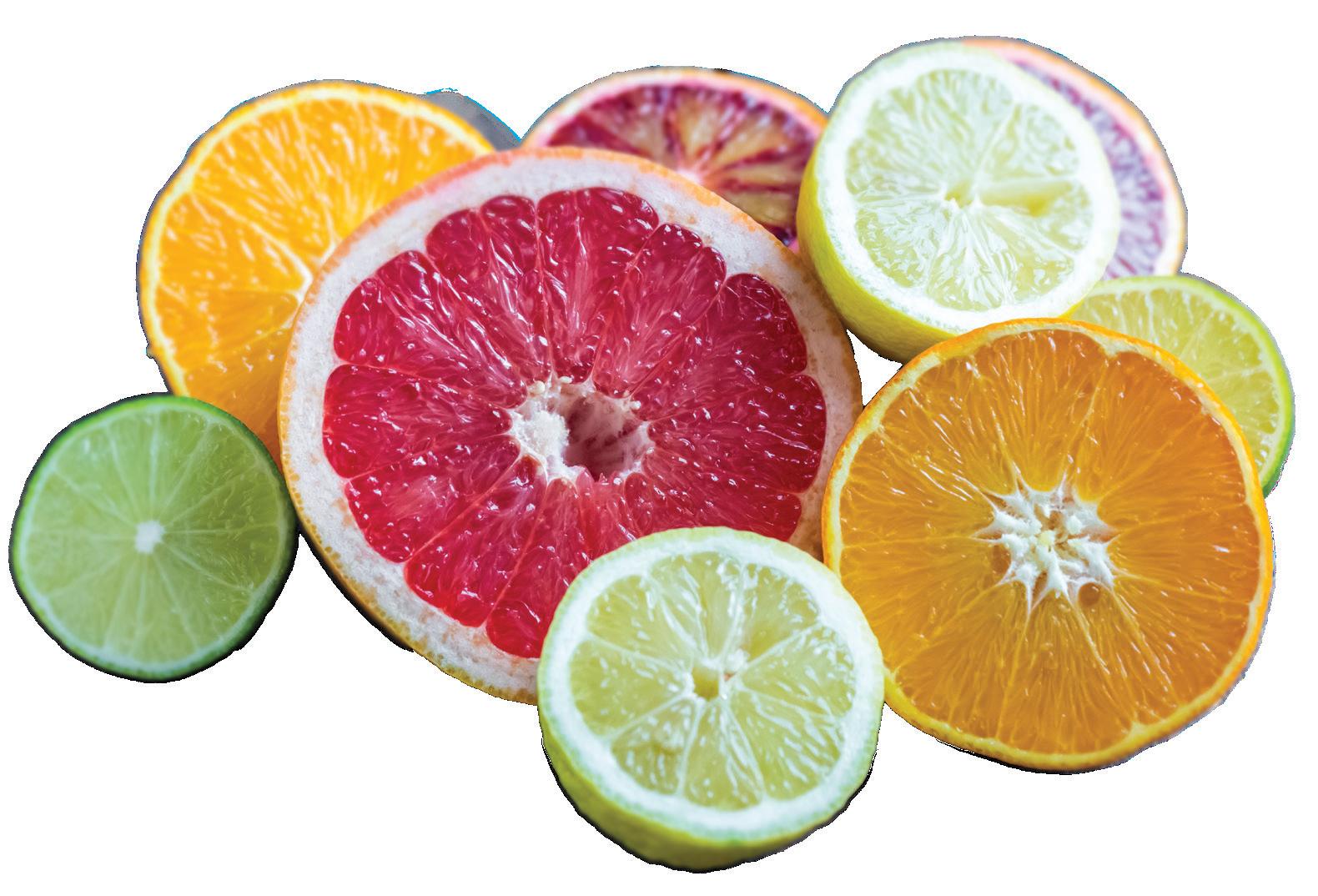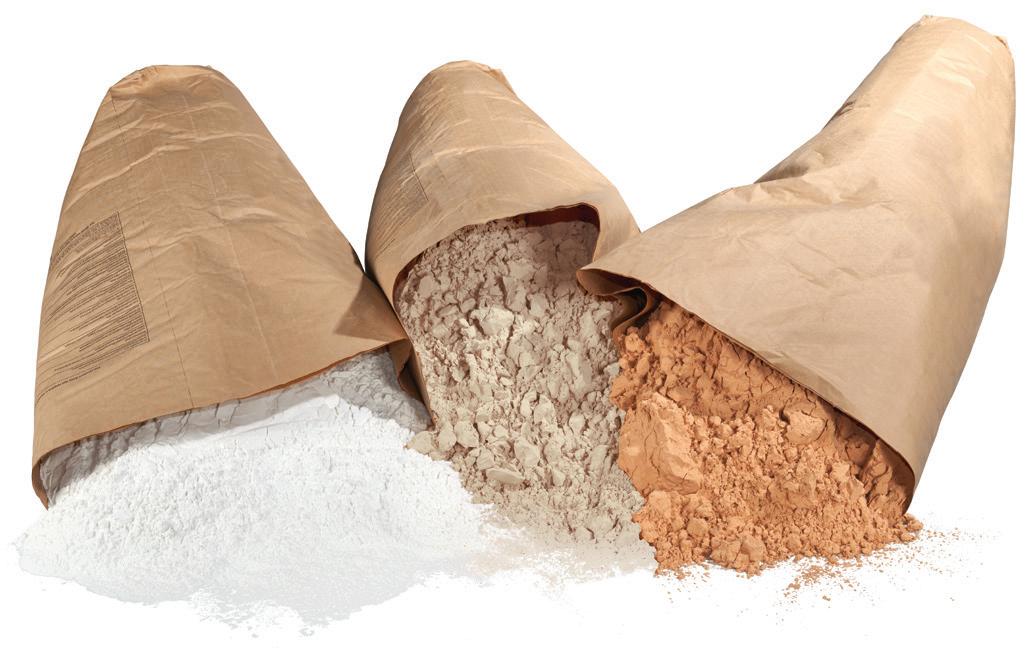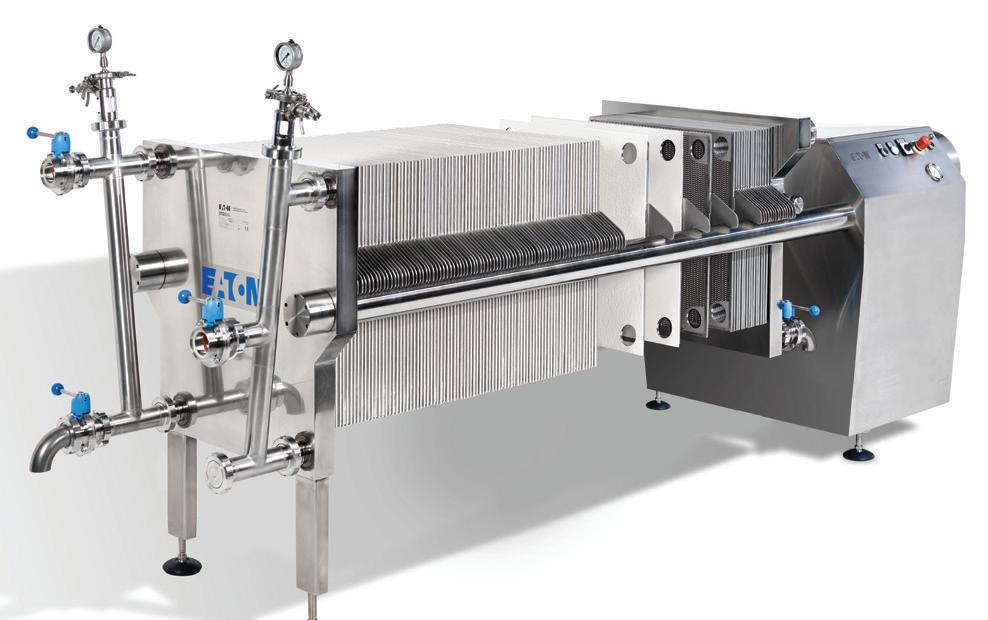
8 minute read
Clarity from Complexity How Proper Filtration Elevates Citrus Oil Processing
By Karol Hinz and Christian Kern
Citrus oil has always carried an air of purity. From the bright burst of orange in a soda to the crisp lemon note in a skincare serum, it promises freshness and simplicity. But behind that promise lies a complex reality – one that producers know all too well.
It isn’t just juice. It is essential oils extracted from the peel, packed with aromatics, acids, colorants, and some times things you really don’t want, like waxes, flavonoids and water. And while demand for these oils is booming across food, cosmetics, pharma and household cleaners, so too is the pressure to get the filtration process exactly right.

Today’s consumers want clarity and consistency. They also want purity. They’re scanning labels, looking for clean formulations. And that is driving a fundamental shift in filtration – one that’s not just about removing what shouldn’t be there, but preserving what should.
So how are smart processors rising to the occasion?
The Unfiltered Truth
Citrus oils are mechanically expressed from the peel – the flavedo – where essential oil is locked inside tiny glands. That pressing releases not just oil but everything else the peel offers: waxes, water, colorants, and pulp solids. It’s all about balancing aroma retention with the removal of bitter components to achieve a premium oil. Of course, filtering the good from the bad is no small feat.
Turbidity
Turbidity is the first and often most underestimated challenge. More than cloudiness, it is a complex cocktail of suspended solids, microscopic pulp fragments, emulsified moisture and trace particulates left over from the extraction process. These heavier particles can settle out over time, forming sediments at the bottom of containers. Phase separation alone can ruin the visual appeal of a product, but more than that, these residual solids can chemically degrade, introducing off-notes, changing color or affecting the oil’s oxidative stability.
Filtration of Turbidity
This is where depth filtration earns its keep. Rather than just skimming particles deep into a three-dimensional inner matrix, capturing them throughout the full thickness of the media through both size exclusion and adsorption. The result is a longer service life, reduced risk of clogging, and a more gradual pressure increase during operation.
There are two main types to think about. Standard depth filter sheets are designed for high retention and consistent flow. These are workhorses –reliable, effective, used for decades. The second type is a low-adsorption filter sheet made from high-purity cellulose with no mineral additives. These are ideal when flavor retention is mission critical as their pore structure filters solids without binding aroma compounds.
An optimal filtration solution allows for strategic pairing of both types based on particle load and filtration goals. When turbidity is low, depth filter sheets made of high-purity cellulose fibers are generally ideal. For moderate loads, standard filter sheets having integrated filter aids can provide more efficient clarification. And in high-solid scenarios, precoat filtration may be needed, or even a more tailored combination of filter sheets and filter aids that offers added capacity while protecting sensory properties.
Processors often start with filter sheets in a classic, multi-sheet plate-and-frame filter setup. Plates and frames should be stainless steel, gasket-free and modular, making them ideal for applications where acid and terpene content is high (potentially causing plastic gaskets to degrade). Some designs let operators flex the filter area or switch modes to pre-coat, depending on the batch size and solids load.
When tackling turbidity, the best filter sheets offer high dirt-holding capacity, stable flow performance and resistance to clogging. Some processors opt to preclassify or pre-filter their oil to reduce the turbidity load before depth filtration, but even then, fine particulates can slip through.
Pressure management is also key. Apply too much, and you risk forcing emulsified water or soft solids through the media. Run it too slow, and you sacrifice efficiency. The ideal setup balances retention and throughput matched to the oil’s specific turbidity profile.


Turbidity may not sound like a showstopper, but in citrus oil filtration, it’s often the biggest test of process discipline in the pursuit of crisp, bright oil.
Waxes
Waxes are invisible at room temperature, but as things cool down, these compounds begin to crystallize. What was once a clear, golden liquid can now contain floating white particles that impact clarity and shelf appeal.
That’s why dewaxing (winterization) is such a critical early step. The process is simple in theory but demands precision in practice. The oil is cooled, typically down to -20°C (-4°F), and held at that temperature for a controlled duration. This thermal shock triggers wax precipitation, separating the insoluble components from the oil matrix. Therein lies the nuance: how fast you cool it, how long you hold it and how evenly the temperature is maintained all influence the outcome. Cool it too quickly, and you risk uneven crystal formation. Hold it for too short a time, and not all the wax comes out. The goal is a stable, complete phase separation – no haze, no floaters.
Filtration of Waxes
Once the wax is crystallized through winterization, it is suspended in the oil as fine, visible particulates. At this stage, filtration becomes the make-or-break step. Standard filtration media can clog quickly with this load, which is why many pro- cessors again turn to depth filter sheets with optimized flow dynamics. Some even incorporate pre-coat filtration (adding a thin cake of filter aid atop the media) to increase throughput and prevent premature clogging of the filter surface. And the stakes are higher than just visual appearance. Waxes can affect scent stability and even alter how citrus oils blend into emulsions. Getting dewaxing right means balancing temperature control, residence time and filtration finesse – a trifecta that directly impacts quality, shelf life and customer satisfaction.
Water
Water is citrus fruit’s most deceptive impurity. Unlike solids or waxes, it doesn’t always make itself obvious, or at least not right away. Left unchecked, water introduces a host of downstream problems: it destabilizes emulsions, accelerates oxidative degradation, encourages microbial activity and can cloud the oil.
During expression, the citrus peel is releasing oil and moisture from the fruit’s outer cells and underlying pith. That moisture doesn’t separate cleanly. Instead, it forms emulsified microdroplets suspended in the oil phase. These aren’t visible to the naked eye, but will show themselves either through turbidity or phase separation.
Filtration of Water
Centrifugation is the first weapon against residual moisture. A high-speed centrifuge exploits the density difference between oil and water, causing heavier water particles to fling outward so they can be drawn off. This works well, but the tightest water-in-oil emulsions (especially those stabilized by natural surfactants in the citrus peel) can still resist separation. That’s where filtration steps in.
Demand for citrus oils is climbing fast, with an expected global market volume of $14 billion by 2030 and a projected annual growth rate of 8%, citrus oils are finding wider use in beverages, skin care, nutraceuticals and aromatherapy. Consumers aren’t just seeking citrus flavor but also purity, aroma and health-forward ingredients.
– Source: Grand View Research; “Citrus Oil Market Size & Trends”; accessed 4.15.25.
To polish off what centrifugation leaves behind, processors rely on depth filtration. The trick here isn’t just capturing water droplets but doing so without pushing them through. That’s why managing differential pressure across the filter is critical. If the pressure gets too high, you risk forcing the deformable droplets right through the pores of your filter media. Instead, the system has to run with a gentle pressure gradient that allows capture without compression.
When to Pre-Coat
Pre-coat filtration isn’t always needed, but in high-solid scenarios, it can make all the difference. It’s the filtration equivalent of giving your system a running start. Instead of pushing oil directly through bare filter sheets and letting solids do their damage, sheets are coated with a thin, porous layer of filter aid, usually perlite, diatomaceous earth (DE) or cellulose-based powders. This sacrificial layer captures the bulk of the particles to leave the underlying sheet cleaner, longer.

p In high-solid scenarios, filter aids such as BECOGUR® or BECOLITE® from Eaton provide an effective pre-coat layer that protects the media and improves filter surface and throughput. Eaton. All rights reserved.
Here’s how it works: before oil is introduced to the system, a filter aid mixed with a compatible liquid is circulated through the plate-and-frame filter. The result is a soft, even cake just a few millimeters thick that blankets the filtration surface. When the citrus oil begins flowing, the pre-coat takes the brunt of the contaminant load, trapping particles on a constantly renewing surface rather than forcing them to embed directly into the media.
Proper filter sheet selection is vital in this stage. Media with a well-engineered pore structure and low electrokinetic charge can physically trap microdroplets without adsorbing valuable oil compounds. The best-performing filter sheets can absorb so much water that they are virtually soaked, but resist swelling and disintegration when in contact with citrus oil’s acidic components. With each aspect of the complete filtering solution working as intended and in harmony, the result is a dry, brilliantly clear oil that’s stable, compliant and ready for blending, bottling or further processing. And in markets where shelf life, appearance and microbial safety are paramount, getting filtration right isn’t just a technical detail but a competitive advantage. t A gasket-free plate-andframe filter arrangement, like Eaton’s BECO COMPACT™ PLATE OC system, helps ensure compatibility with acidic citrus oils and allows modular configuration for varied batch sizes. Eaton. All rights reserved.

Pre-coating can also prevent the filter sheet from clogging too soon. Once the pre-coat layer starts to saturate, and be flushed and rebuilt with a fresh cake to keep operations streamlined. Filter aids are consumable, and using them means additional material handling, disposal logistics and upfront cost. But many times, the gains in throughput, consistency and filter sheet lifespan easily offset those factors, especially when running larger batches or trying to stretch time between filter changes.
Again, the trick is knowing your product. Oils with lower solids loads or better upstream clarification may do just fine with sheet filtration alone. Choosing whether to use pre-coat filtration often depends on factors like batch size, filtration targets, waste disposal constraints and even regional customer preferences.
What Comes Next
Efficiency has become the heartbeat of modern citrus oil filtration. It’s not enough to simply remove the unwanted bits – processors are laser-focused on how fast, cleanly and cost-effectively that happens. How long a filter runs before clogging, how often sheets need replacing and how much valuable oil is lost in the cake all matter. And they matter more than ever. Yield isn’t just a metric – it’s money, quality and customer satisfaction rolled into one.
That’s why filtration systems today are being evaluated through a broader lens: clarity and compliance – yes – but also the total cost in terms of downtime, labor and long-term durability. For citrus oil applications, that often means using equipment built to meet not just FDA (U.S.) and LFGB (Germany) food safety standards, but also ATEX certification requirements, which are essential for processing in environments with potentially flammable vapors. For instance, stainless steel gasket-free plate-and-frame filters are a common choice here – they’re dura- ble, easy to sterilize and ATEX-compliant by design when working with acidic or volatile compounds.
As citrus oils take center stage in “clean label” trends – powering everything from craft sodas to wellness capsules – the stakes get higher, putting the demand for purity under the microscope. And while mechanical performance still reigns, filtration’s next wave is digital. Systems that track pressure, flow and clarity in real time, for instance, are already proving their worth in optimizing process efficiency. Coupled with sustainability pressures, the push to conserve water and a focus on reducing waste, the industry is pivoting toward even more capable, adaptive solutions.
But here’s the truth: there’s no one-sizefits-all. Every citrus oil is different – just like every customer’s definition of “premium.” That’s why flexibility is crucial, from










